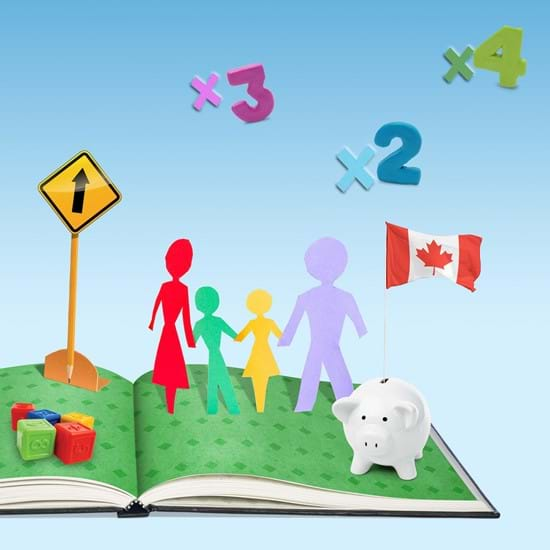
The Back-to-School Season – In Retrospect

Written by: Kaleido
Now that the kids have left for school in their Sunday best and you finally have a moment to sit down, take a minute to think about how you handled the situation...is there anything you would have done differently? And more specifically, is there any way you could have saved more on school supplies?
According to a recent survey conducted by CROP for Kaleido, an education savings specialist, families in Quebec reported planning to spend approximately $705 per child on tuition fees, school supplies and clothes this year (all education levels combined). Are you among this the average? What was your final bill for the new school year?
Here are five useful back-to-school savings tips to consider for next year:
1. Recycle last year’s school supplies.
At the end of the school year, make sure to go through your child’s school material and keep anything that’s in good condition for next year! If you have several children in different grades, you can also give your youngest child the items your oldest will no longer need or use. This simple tip will result in substantial savings!
2. Browse through weekly flyers.
This will help you find local sales and the best deals on the items of your child’s school supplies list. You can also enjoy the lowest price policy offered in several stores. This could save you dozens of dollars!
3. Avoid buying in large quantities.
By buying in bulk, you may feel like you’re saving money, but unless you use all the supplies, you may not get your money’s worth in the long run.
4. Don’t give your child all his or her school supplies at the start of the year.
It’s useless to put four erasers in your child’s pencil case on the first day of school; most likely, these will get lost quickly. It’s wiser to give your child the supplies needed to start the year and to provide or replace material over the year when necessary. This will prevent the waste or loss of supplies.
5. Have a nest egg ready!
Any parent knows that a new school year is expensive, especially for families with several school-age children. Prepare in advance and establish a budget. Savings will ensure you avoid last minute surprises!
Also, 55% of the survey respondents mentioned being concerned about the cost of their children’s higher education. In the next 20 years, in Quebec, the expenses for a five-year post-secondary education should increase from $75,000 to $140,000. It’s important to consider this reality and to prepare accordingly early on. A great way to do so is to invest in a registered education savings plan (RESP).
A registered education savings plan (RESP) is an investment vehicle specifically designed to accumulate funds for a child's post-secondary education. One of its main advantages, compared to a traditional savings account or a tax-free savings account (TFSA), is that the RESP benefits from generous government grants totalling up to $12,800 per child*. The money accumulated in an RESP is intended to cover tuition fees, as well as any other education-related expense, such as housing, school supplies, food, transportation fees, etc.
Sources :
CanLearn
Kaleido (survey conducted by the CROP firm from May 15 to 20, 2013)
Canada Revenue Agency
*The Canada Education Savings Grant (CESG) rate is 20% to 40% based on net family income. The CESG annual limit is set at $600; lifetime limit is set at $7,200 per beneficiary. The Quebec Education Savings Incentive (QESI) rate is 10% to 20% based on net family income. The QESI annual limit is set at $300; lifetime limit is set at $3,600 per beneficiary. The Canada Learning Bond (CLB) can reach up to $2,000 for a child born after December 31, 2003 and whose family receives the National Child Benefit Supplement.


